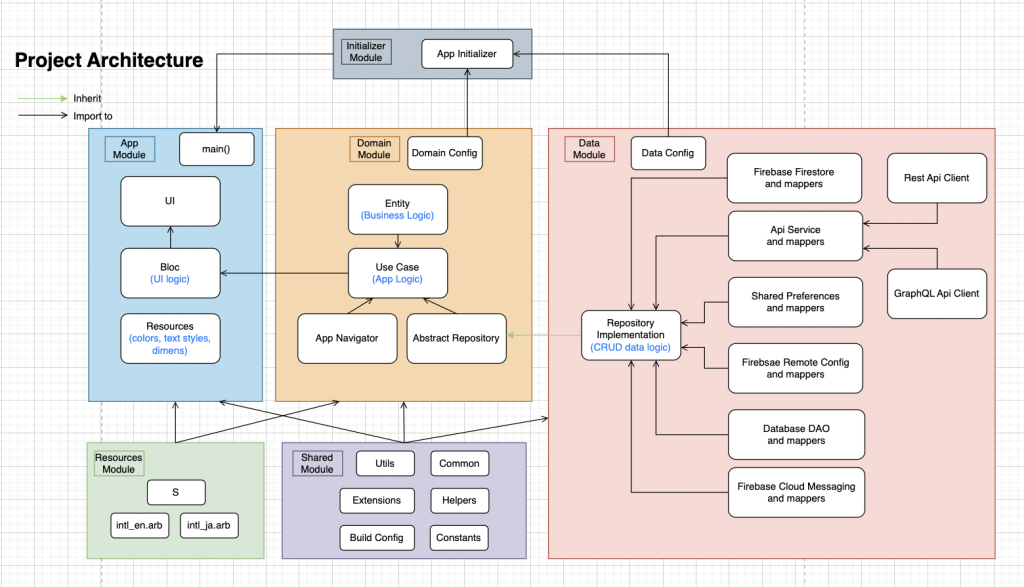Introduction
In the fast-paced world of app development, time is of the essence. Businesses need their apps to reach the market quickly, and developers often find themselves juggling multiple projects simultaneously. In such a scenario, the importance of having a well-crafted boilerplate template code cannot be overstated. This article explores why having a boilerplate template code is essential to reduce Time-To-Market and efficiently manage multiple projects, using Flutter as an example.
The Power of Boilerplate Template Code
Boilerplate template code, often referred to simply as boilerplate, is a set of standardized code snippets, templates, or project structures that can be reused across multiple projects. It serves as a foundation for new projects, containing essential elements and configurations that are common to most applications.
Boilerplate template code typically includes the following:
- Project Structure: A well-organized directory structure that separates code, assets, and configurations, making the codebase easily navigable.
- Dependencies: Pre-configured packages and dependencies that are commonly used in app development, such as HTTP clients, state management libraries, and UI components.
- Theming: A predefined theming system that ensures consistent and appealing UI designs throughout the app.
- Routing: A routing setup to manage navigation within the app seamlessly.
- API Integration: Boilerplate code for integrating APIs and managing data flows.
- Localization: Localization support for internationalization, ensuring the app can be easily translated into different languages.
- Authentication: Authentication flows that can be adapted to specific project requirements.

Why Boilerplate Template Code Matters
- Accelerates Development: One of the most significant advantages of boilerplate template code is its ability to kickstart development. Instead of starting each project from scratch, developers can use a template as a foundation, saving hours of setup and configuration time.
- Ensures Consistency: Boilerplate code enforces consistency in coding style, project structure, and UI design. This uniformity not only streamlines development but also enhances the user experience by providing a cohesive look and feel across all screens.
- Reduces Errors: By including best practices and pre-tested code, boilerplate templates help prevent common errors and bugs, leading to a more robust and stable application.
- Enhances Collaboration: When developers work on multiple projects simultaneously, having a consistent boilerplate template code ensures that team members can easily switch between projects and understand the codebase.
- Facilitates Maintenance: As projects evolve, maintaining them becomes more manageable with boilerplate code. Updates and improvements can be applied uniformly across all projects built upon the same template.
- Increases Time-To-Market: With the reduced setup time, fewer errors, and improved development speed, apps can reach the market faster, giving businesses a competitive edge.
Creating Your Custom Boilerplate Template
While there are many boilerplate templates available for various frameworks and languages, creating a custom template tailored to your specific project needs is often the best approach. Here’s a simplified guide on how to create one:
- Analyze Your Needs: Determine the common components, libraries, and configurations that are essential for your projects.
- Set Up the Template: Create a new project with the desired directory structure, dependencies, and configurations.
- Modularize Your Code: Divide your template into reusable modules or packages that can be easily integrated into new projects.
- Document Your Template: Provide clear documentation on how to use your boilerplate template, including setup instructions and customization options.
- Maintain and Update: Regularly update your boilerplate code to keep it in line with the latest best practices and framework updates.
Conclusion
In a competitive app development landscape, saving time, ensuring consistency, and reducing errors are paramount. Boilerplate template code is the secret weapon that can significantly accelerate your development process, improve project management, and increase your Time-To-Market.
By investing the effort to create or adopt a well-crafted boilerplate template, you’ll be better equipped to tackle multiple projects simultaneously and deliver high-quality apps efficiently, regardless of the framework you choose to work with.
